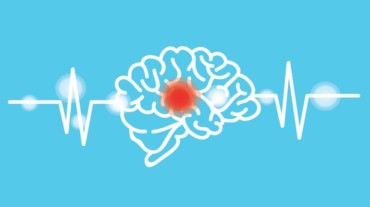
A stroke or brain attack is caused by a clot or a ruptured vessel that disrupts blood flow to the brain. The motor deficits are characterized by paralysis (hemiplegia) or weakness (hemiparesis), typically on one side of the body and it can result in problems with coordination and balance. But physiotherapy can prove to be an effective solution to regain strength after stroke. Before we get to that, let’s understand more about this condition.
There are three types of strokes that can happen: ischemic stroke (blockage in the artery), hemorrhagic stroke (blood vessel rupture), and mini-stroke or transient ischemic stroke (temporary blockage in the artery). The problems caused by stroke are different for everyone.

Some of the risk factors for stroke include heart disease, high blood pressure, high cholesterol, diabetes, smoking, and lack of exercise.
Spotting the signs of stroke at the right time and immediately acting upon them is crucial. One of the ways to spot symptoms is by following the F.A.S.T model. Acting F.A.S.T. can help stroke patients get the treatment they urgently need.
F – Face – Ask the person to smile. Does one side of their face droop?
A – Arms—Ask the person to lift both their arms. Does one arm drift downwards?
S – Speech – Ask the person to repeat a simple phrase. Is their speech slurred?
T – Time – If you observe the above signs, call emergency services immediately
No one ever anticipates the kind of consequences stroke results in. It not only affects the survivor but also impacts the family. A patient may face issues such as paralysis, shoulder pain, difficulty walking, balance problems, and stiff arms.
The treatment timeline for stroke may vary depending on the patient’s stroke severity. Rehabilitation is considered one of the key elements of post-stroke recovery. It’s important to know that every stroke is different and the recovery process tends to be unique for each patient. The patient’s post-stroke rehab team comprises a team of expert physiotherapists, speech therapists, and nurses.
Physiotherapy rehabilitation for stroke patients can help them regain lost strength, control recurrences of stroke, and improve the overall quality of life of the patient.
The role of physiotherapy in curing a stroke patient is immense and physiotherapists form an integral part of the multidisciplinary stroke care team.
The main focus of the rehabilitation sessions is to strengthen the muscles, limbs, and enable movement again. When a person has a stroke, their balance and posture are greatly affected.
A planned physiotherapy session cannot help them regain balance and posture, but also help them regain confidence. Stroke recoveries are full of milestones, some are small ones like lifting a foot up, others are huge, like walking for the first-time post-stroke. It can take weeks, months, or even years to recover, depending on the severity and type of stroke.

There are a number of ways by which home-based physiotherapy can benefit stroke patients to recover faster. Post-stroke, a six-month physiotherapy plan should be laid out with a minimum of one hour of active practice per day, at least five days a week. Patients should be mobilised as early and as frequently as possible.
Below are a few ways in which physiotherapy can help in improving strength.
Select Topics of your interest and let us customize your feed.
PERSONALISE NOW1. Soft tissue mobilisation: To help relieve pain
2. Bedside mobility training: To avoid complications such as deep vein thrombosis (when blood clots block a vein), pressure sores, etc.
3. Functional electrical stimulation: It helps in improving nerve conduction and early recovery. This can also be very effective in restoring movements and preventing or reducing shoulder subluxation (partial dislocation of the shoulder)
4. Passive movements: It prevents stiffness and helps with blood flow, thereby improving awareness of limbs.
5. Exercises: Exercise helps in improving range of motion, strength, coordination, and balance.
6. Task-specific training: It helps to improve trunk control and balance.
7. Stretches: They help in managing spasticity and prevent contractures.
8. Range of motion and weight-bearing exercises: To avoid shoulder stiffness or weakness, and to improve the ability to bear the weight through the arms.

9.Chest physiotherapy techniques: This is to improve the respiratory and circulatory capacity
10. Coordination exercise: This helps to improve the coordination
11. Constraint-induced movement therapy: During a task-specific practice, individuals with hemiplegic (paralysis) stroke are forced to use their affected limb
12. Orthotics: Orthotics are used to move more efficiently or to optimise the position of your body for functional tasks and comfort
13. Gait training: Learning to walk again after a stroke is one of the main goals of home physiotherapy. Patients can restore strength and improve their gait with the use of the right assistive device walkers and particular gait exercises such as high stepping, sideways stepping, and backward stepping
14. Cardiorespiratory training: Overground walking or treadmill training
Get Latest Updates on Preventive Care, Family Care, Reproductive Care, Self Care